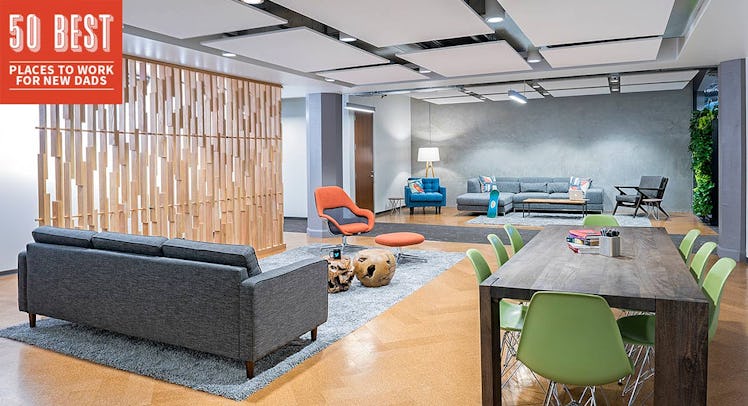The 50 Best Places to Work For New Dads 2018: Twitter
Our list of 50 Best Places to Work For New Dads in 2018 recognizes companies with exceptional paternity leave and benefits programs.

Fatherly’s annual “50 Best Places to Work for New Dads” ranking is a celebration of corporations committed to helping men manage their dual roles as providers and caregivers. Though only one company can be ranked number one, every company featured has provided real support for working parents with exceptional and thoughtful offerings.
Rank: 5
2017 Rank: 6Full-Time Employees: 3,300
The Bay Area’s other social media giant was, like many more successful and public facing technology firms, was an early adopter of parental leave policies that helped set a family-friendly standard for how tech companies recruit and retain talent. The preferred podium for President Trump, Twitter has attracted a fair amount of criticism over the past several years. Still, the company has remained committed to the humane treatment and of its 3,300 employees and implemented a number of new anti-discrimination and abuse programs while continuing to offer new parents 20 weeks of parent leave.
When new parents return to work, they are eligible to join a group called Twitter Parents, which provides support to all parents in the company and works with many partners to provide discount rates on goods and services specifically for moms and dads. Aside from its parental leave benefits, the company a robust suite of employee perks, including free meals and a wellness reimbursement which can be used for fitness classes.
Fatherly’s 2018 rankings are based on a scoring metric inclusive of data related to company policies on the following issues: paid parent leave, ramp-back time, flextime, onsite childcare, childcare subsidies, backup childcare, number of sick days, support groups, fertility aid, adoption aid, student loan assistance, education funding, bereavement leave, elder care planning. Length of paid leave, onsite childcare, and ramp-back time were the most heavily weighted ranking factors.
This article was originally published on